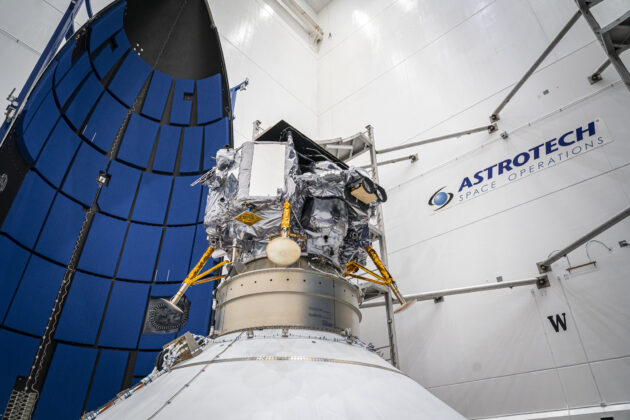
Astrobotic says that it’s given up on its plan to put a commercial spacecraft safely on the moon’s surface, due to a propellant leak that will soon leave its Peregrine lander without fuel.
The Pittsburgh-based company said there was no indication that the leak occurred as the result of the lander’s launch by United Launch Alliance. ULA’s Vulcan Centaur rocket made its first liftoff over the weekend with the aid of BE-4 engines provided by Jeff Bezos’ Blue Origin space venture.
The Astrobotic team’s working theory is that a valve between the propulsion system’s oxidizer and a store of helium that served to pressurize the oxidizer tank failed to reseal after it was actuated during spacecraft initialization. “This led to a rush of high-pressure helium that spiked the pressure in the oxidizer tank beyond its operating limit and subsequently ruptured the tank,” Astrobotic said today in mission update.
Because of the resulting leak, mission controllers had a hard time keeping Peregrine’s solar arrays pointed toward the sun — but today Astrobotic said “the team was able to update the control algorithm and fix this issue.” The lander’s batteries are currently fully charged, and onboard cameras are sending pictures back down to Earth.
Although Astrobotic said there was “no chance” of making a soft landing on the moon, there’s still enough propellant “to continue to operate the vehicle as a spacecraft.” Current estimates suggest that Peregrine will run out of fuel within a couple of days — long before the craft was scheduled to touch down on the moon. Astrobotic’s update didn’t address the possibility of making a crash landing.
Peregrine’s main mission was to deliver a suite of NASA-supported science instruments to the lunar surface, under the terms of a program known as Commercial Lunar Payload Services, or CLPS. It was also carrying more than a dozen secondary payloads, ranging from a mini-rover and micro-robots to DNA archives.
NASA’s contract called for paying $108 million to Astrobotic, but the full amount may not end up being paid out. On Monday, NASA said it was “working with Astrobotic to determine impact” on its planned science investigations.
Astrobotic highlighted how Peregrine might still help pave the way for future landers. “We continue receiving valuable data and proving spaceflight operations for components and software relating to our next lunar lander mission, Griffin,” the company said. Griffin is due to deliver NASA’s VIPER rover to the moon late this year.
Next month, Houston-based Intuitive Machines plans to have its Nova-C lander launched on a SpaceX Falcon 9 rocket for a CLPS-supported trip to the moon’s south polar region. That will be the next opportunity to put a U.S.-built spacecraft safely on the moon — something that hasn’t been done since Apollo 17 in 1972.

